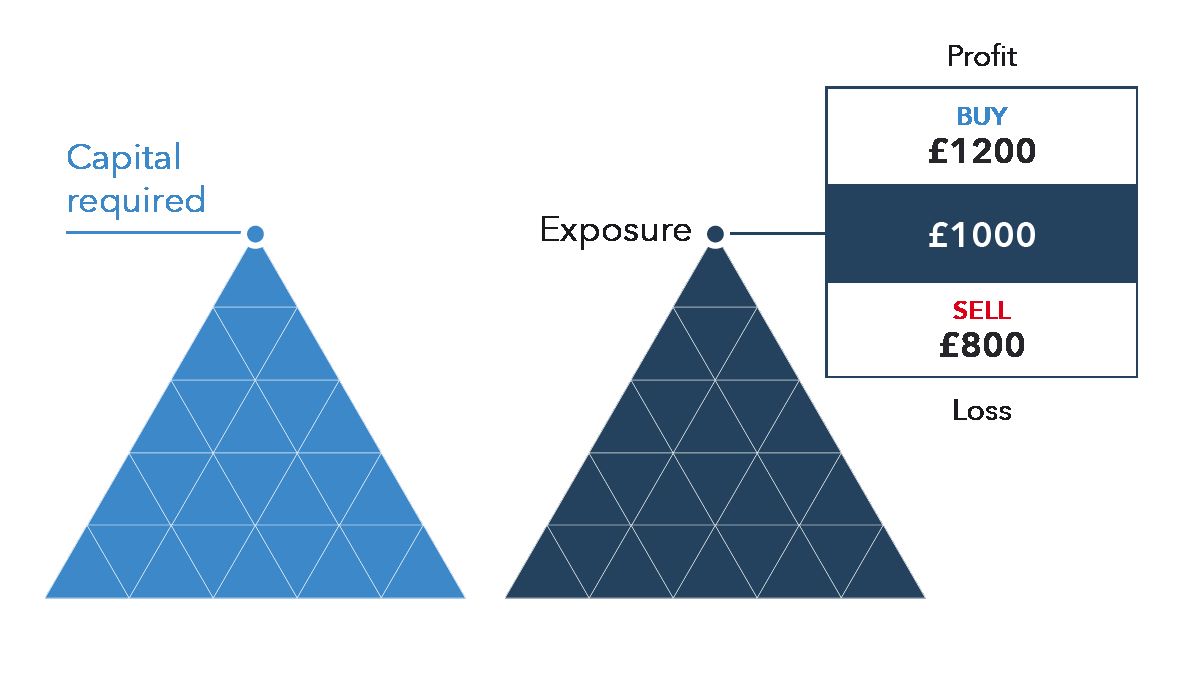Home>Finance>Why Are Mergers And Acquisitions Bad For The Economy


Finance
Why Are Mergers And Acquisitions Bad For The Economy
Published: February 25, 2024
Discover the impact of mergers and acquisitions on the economy and the finance industry. Learn why they can have negative effects and how they influence financial markets.
(Many of the links in this article redirect to a specific reviewed product. Your purchase of these products through affiliate links helps to generate commission for LiveWell, at no extra cost. Learn more)
Table of Contents
Introduction
Introduction
Mergers and acquisitions (M&A) have become a common occurrence in the corporate world, often making headlines and shaping the business landscape. While these strategic moves can bring about benefits such as synergy, increased market share, and enhanced competitiveness, there is a growing concern about their potential negative impact on the economy. This article delves into the complexities of M&A and explores the reasons why they can be detrimental to the overall economic health.
The process of M&A involves one company taking over another and combining their operations, often with the aim of achieving growth and efficiency. However, the consequences of such actions extend beyond the boardroom, influencing various facets of the economy. It is essential to examine these effects critically to gain a comprehensive understanding of the implications of M&A activities.
As we delve into the topic, it's crucial to recognize that while M&A can bring about positive outcomes for the involved companies, they may not always align with the broader interests of the economy. By examining the impact on competition, job losses, market power, economic inefficiency, innovation, and wealth inequality, we can gain insights into the multifaceted nature of this issue. This exploration will shed light on the complexities of M&A and provide a nuanced perspective on their implications for the economy.
Impact on Competition
When companies engage in mergers and acquisitions, the resulting consolidation can have a significant impact on competition within the market. While proponents of M&A often cite increased efficiency and improved competitiveness as key benefits, the reality can be quite different. One of the primary concerns associated with M&A is the potential for reduced competition, which can lead to negative outcomes for consumers and the broader economy.
Consolidation resulting from M&A activities can limit the number of players in a particular industry, leading to decreased competition. This reduction in competition may result in higher prices for consumers, as the lack of competitive pressure diminishes the incentive for companies to offer competitive pricing. Furthermore, a decrease in competition can stifle innovation and limit consumer choice, as dominant firms may face fewer incentives to invest in research and development or differentiate their products and services.
Moreover, reduced competition can also have implications for smaller businesses that may struggle to compete with larger, merged entities. This can create barriers to entry and expansion, further entrenching the market power of dominant companies. As a result, the overall competitive landscape may become less dynamic, potentially hindering economic growth and innovation.
It is essential to recognize the delicate balance between fostering healthy competition and allowing companies to pursue strategic initiatives such as M&A. While competition is a driving force behind innovation, efficiency, and consumer welfare, unchecked consolidation through M&A can tip the scales in favor of a select few, potentially compromising the benefits of a competitive market.
Job Losses
Mergers and acquisitions have the potential to significantly impact employment levels, often leading to job losses within the involved companies. While M&A activities are frequently justified as a means to achieve cost savings and operational efficiency, the human cost in terms of job displacement cannot be overlooked. The restructuring and streamlining that often follow M&A transactions can result in layoffs and workforce reductions, affecting individuals, families, and communities.
One of the primary drivers of job losses in the aftermath of M&A is the duplication of roles and functions within the merging entities. As companies consolidate their operations, redundant positions may be identified and subsequently eliminated to streamline the organization and reduce costs. This can lead to a significant number of employees being displaced, facing uncertainty regarding their livelihoods and financial security.
Furthermore, the disruption caused by M&A activities can extend beyond the directly impacted employees. Suppliers, service providers, and local businesses that rely on the affected companies may also experience adverse effects, amplifying the broader economic impact of job losses stemming from M&A.
It is crucial to consider the social and economic implications of widespread job losses resulting from M&A. Displaced workers may face challenges in finding new employment opportunities, and the communities in which they reside may experience a decline in consumer spending and economic vitality. Additionally, the loss of institutional knowledge and expertise due to workforce reductions can have long-term repercussions for the affected companies, potentially impacting their ability to innovate and adapt in the evolving business landscape.
While M&A activities are often driven by strategic imperatives and financial considerations, the human dimension of job losses should not be overlooked. Balancing the pursuit of corporate objectives with the well-being of employees and the broader labor market is essential in evaluating the overall impact of M&A on the economy.
Market Power
One of the significant concerns associated with mergers and acquisitions is the potential for the resulting entities to wield substantial market power, which can have far-reaching implications for competition and consumer welfare. As companies combine forces through M&A, they may attain a dominant position within their respective industries, enabling them to influence market dynamics, pricing, and overall industry structure.
When firms consolidate through M&A, they may achieve a level of market power that allows them to dictate terms to suppliers, exert pricing pressure on competitors, and control a significant share of the market. This concentration of market power can lead to anti-competitive behaviors, such as price manipulation, exclusionary tactics, and the stifling of potential rivals, ultimately undermining the principles of fair competition and consumer choice.
Furthermore, the accumulation of market power through M&A can impede the entry of new competitors, as the barriers to challenging the established dominant players become increasingly formidable. This can result in reduced innovation, limited product diversity, and diminished incentives for existing firms to improve quality and efficiency, ultimately hampering the overall dynamism of the market.
From a regulatory standpoint, the emergence of entities with significant market power due to M&A activities can raise concerns about monopolistic practices and the potential for consumer harm. Antitrust authorities and regulatory bodies play a crucial role in scrutinizing M&A transactions to assess their impact on market competition and intervene when necessary to preserve a level playing field for businesses and protect consumer interests.
It is essential to recognize the delicate balance between fostering healthy competition and allowing companies to pursue strategic initiatives such as M&A. While market power can be a byproduct of legitimate business activities, its unchecked accumulation through M&A can lead to adverse outcomes for consumers, competitors, and the broader economy, necessitating vigilant oversight and regulatory scrutiny.
Economic Inefficiency
While mergers and acquisitions are often positioned as vehicles for achieving operational efficiency and synergies, the reality can sometimes diverge from this narrative, leading to potential economic inefficiencies. The pursuit of M&A-driven efficiencies may not always materialize as intended, and in some cases, the resulting integration challenges and organizational complexities can lead to suboptimal outcomes from an economic standpoint.
One of the key factors contributing to economic inefficiency following M&A is the complexity of integrating disparate organizational structures, cultures, and systems. The process of aligning operations and harmonizing processes between merging entities can be intricate and resource-intensive, potentially leading to disruptions in productivity, increased administrative overhead, and a diversion of management focus from core business activities.
Furthermore, the financial and human capital investments required to navigate the integration process can impose a strain on the involved companies, diverting resources that could otherwise be allocated to innovation, research and development, and organic growth initiatives. This can result in a temporary or prolonged period of reduced operational efficiency, impacting the overall economic performance of the merged entity and potentially reverberating throughout the supply chain and broader business ecosystem.
Additionally, the pursuit of M&A synergies may lead to unforeseen challenges and complexities that hinder the realization of anticipated cost savings and operational efficiencies. Cultural clashes, resistance to change, and operational disruptions can impede the seamless integration of merging entities, resulting in a protracted period of economic inefficiency and suboptimal performance.
It is essential to critically evaluate the economic implications of M&A activities, recognizing that the pursuit of efficiencies through consolidation may not always yield the intended economic benefits. While M&A can be a strategic tool for growth and transformation, the potential for economic inefficiency underscores the importance of thorough due diligence and strategic planning to mitigate integration challenges and maximize the value creation potential of such transactions.
Impact on Innovation
Mergers and acquisitions can have a profound impact on innovation within the business landscape, influencing the incentives, capabilities, and outcomes related to research, development, and creative endeavors. While proponents of M&A often highlight the potential for enhanced innovation through combined resources and expertise, the reality is nuanced, with both positive and negative implications for the innovation ecosystem.
Following M&A activities, the merged entities may redirect their focus and resources toward integrating operations, streamlining processes, and rationalizing product portfolios, potentially diverting attention from ongoing innovation initiatives. This shift in priorities can disrupt the continuity of research and development efforts, impacting the pace and trajectory of innovation within the affected organizations.
Moreover, the consolidation of intellectual property and technological assets resulting from M&A may lead to a concentration of innovation capabilities within the merged entity, potentially reducing diversity and competition in the innovation landscape. This can limit the flow of new ideas, technologies, and approaches, ultimately stifling the vibrancy and dynamism of the broader innovation ecosystem.
On the other hand, M&A can also create opportunities for synergistic collaboration and knowledge sharing, leveraging the combined expertise and resources of the merging entities to drive innovation and breakthrough advancements. The pooling of talent, intellectual capital, and research capabilities can catalyze new avenues of innovation, potentially leading to the development of transformative products, services, and technologies.
It is crucial to recognize the complex interplay between M&A activities and their impact on innovation. While the pursuit of M&A synergies may present challenges to the continuity and diversity of innovation, it can also serve as a catalyst for collaborative innovation and the cross-pollination of ideas and expertise. Balancing these dynamics is essential in evaluating the overall implications of M&A on the innovation landscape and its significance for the broader economy.
Wealth Inequality
Mergers and acquisitions can contribute to the exacerbation of wealth inequality within the economy, potentially widening the gap between the affluent and the less privileged. The financial implications of M&A activities, particularly in terms of the distribution of wealth and resources, can have far-reaching effects on societal and economic equality.
When companies engage in M&A, the resulting financial gains and windfalls often accrue to shareholders, executives, and key stakeholders involved in the transaction. This can lead to a concentration of wealth among a select group of individuals, potentially exacerbating existing disparities in wealth distribution. The substantial payouts and incentives associated with M&A transactions can further enrich the already affluent, potentially widening the wealth gap within society.
Furthermore, the economic consolidation and market dominance that can result from M&A activities may enable the merged entities to wield significant influence and control over resources, potentially tilting the scales of economic opportunity in favor of the consolidated entities and their stakeholders. This can create barriers to entry and competition for smaller firms and entrepreneurs, limiting their ability to access resources and compete on an equal footing, thereby perpetuating wealth inequality.
From a broader economic perspective, the concentration of wealth resulting from M&A activities can impact consumer spending patterns, investment dynamics, and overall economic mobility. The accumulation of substantial wealth within a select segment of the population may lead to disparities in consumption, investment, and economic participation, potentially influencing the overall vibrancy and inclusivity of the economy.
It is essential to critically evaluate the implications of M&A activities on wealth inequality, recognizing the potential for these transactions to impact the distribution of wealth and resources within society. Balancing the pursuit of corporate growth and strategic initiatives with considerations of societal and economic equality is crucial in assessing the broader implications of M&A on wealth distribution and its significance for the overall economic landscape.
Conclusion
As we navigate the complexities of mergers and acquisitions (M&A), it becomes evident that these strategic activities can have multifaceted implications for the economy. While M&A transactions are often driven by the pursuit of growth, efficiency, and strategic realignment, it is essential to critically evaluate their broader impact on competition, employment, market dynamics, innovation, economic efficiency, and wealth distribution.
The examination of M&A’s impact on competition reveals the potential for reduced market dynamism and consumer choice, highlighting the delicate balance between consolidation and healthy competition. Job losses stemming from M&A activities underscore the human dimension of these transactions, emphasizing the significance of considering the social and economic ramifications of workforce disruptions. Additionally, the accumulation of market power resulting from M&A activities can raise concerns about anti-competitive behaviors and consumer welfare, necessitating vigilant regulatory oversight.
From an innovation standpoint, M&A activities can influence the trajectory and diversity of research and development efforts, presenting both opportunities for collaborative innovation and challenges to continuity and diversity. Furthermore, the pursuit of operational efficiencies through M&A may not always yield the intended economic benefits, underscoring the importance of strategic planning and due diligence to mitigate integration challenges.
Finally, the implications of M&A on wealth inequality highlight the potential for these transactions to impact the distribution of resources and economic opportunities, emphasizing the need to consider the societal and economic equality dimensions of such activities.
In conclusion, while mergers and acquisitions can serve as strategic tools for growth and transformation, it is imperative to approach these transactions with a comprehensive understanding of their potential implications for the broader economy. Balancing the pursuit of corporate objectives with considerations of competition, employment, innovation, economic efficiency, and wealth distribution is essential in evaluating the overall impact of M&A on the economy and society at large.














